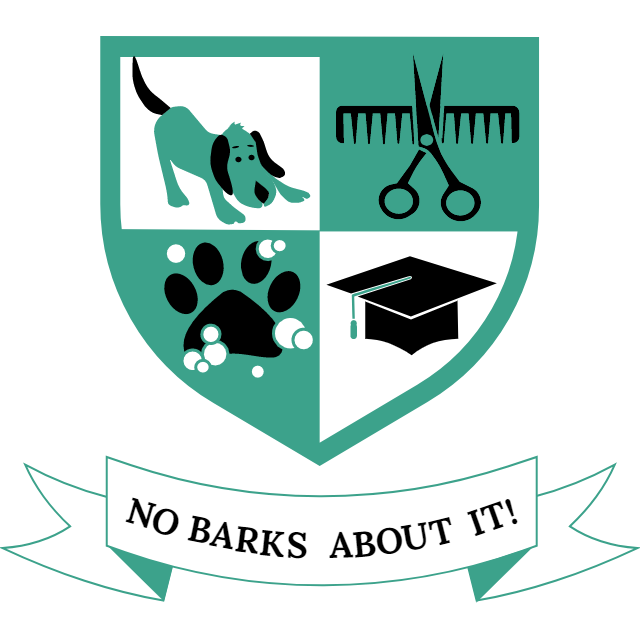If you’ve checked out our add-on menu at the salon, you’ve probably noticed teeth brushing as an option. You may have also heard a friend lament about the high cost of a canine (or feline) dental cleaning at your veterinarian. This leaves you wondering; do I need to be worrying about my dog’s teeth?
Dogs and cats can get gum disease, just as humans can. Gum disease is an infection resulting from the build up of soft dental plaque on the surfaces of teeth, and the bacteria it contains can lead to bone infection in the surrounding teeth. The hard dental tartar (the brownish build up you can see on the surface of the teeth) forms when calcium salts from the saliva are deposited onto the plaque. This forms a rough surface, which encourages more plaque accumulation.
The most common complaint from owners of dogs with gum disease is that their dog’s breath smells awful. As the gum disease progresses, the plaque and tartar build up, the gums become irritated which leads to bleeding, oral pain and eventually tooth decay. So how do you keep Toto’s teeth clean, avoiding bad breath in the present and bad health in the future?
Daily (yes, daily!) maintenance to prevent the plaque and tartar buildup in the first place. But don’t fret, it’s not as cumbersome as you might think. Daily brushing is the gold standard for keeping your dog’s teeth fresh and clean. There are different types of toothbrushes on the market, as well as different flavors of dog toothpaste. It’s super important not to use human toothpaste! Human toothpaste is not meant to be swallowed, and contains artificial sweeteners that can be toxic to dogs.
When brushing the dog’s teeth, apply the toothpaste to the toothbrush and gently insert the brush along the outside of the teeth on one side of the mouth. Use your other hand to gently hold the dog’s mouth. You don’t need to clamp their mouth shut, but you want to dissuade them from opening wide or pulling their head back. Run the brush back and forth along the outside of the teeth, and repeat on the other side. Then make a couple passes along the front teeth. Doggie toothpaste is enzymatic so the not only does brushing mechanically dislodge debris from the teeth, but it spreads the paste around so it can stick to the surface of the teeth and continue dissolving plaque and tartar after brushing. Use a gentle but firm pressure when brushing, and if you see blood on the toothbrush, use even less pressure.
Besides brushing, there are other products that can help keep Fido’s teeth sparkling. There are a myriad of dental chews which serve to physically scrape off tartar as the dog chews. There are also water additives can help prevent new tartar and plaque from building up when used daily in the dog’s water bowl (though it won’t do anything about the tartar that already exists on the teeth).
Your pup’s relationship with his vet should begin during the puppy months. They can provide basic maintenance, such as a dental exam, during his yearly check up. They’ll look for any abnormalities, decay or injuries to the mouth. If the tartar build up is bad enough, your vet may recommend your dog get a dental cleaning under anesthesia. Once tooth decay sets in, extractions may be the only option to get rid of dead teeth. Your dog should also head to the vet if you notice any abnormal drooling, avoidance of eating, dropping food out of his mouth while eating, sensitivity of being petted or handled around his face, or an extra foul odor coming from his mouth. All of these can indicate pain and/or infection and require a trip to the vet.
Practicing good dental hygiene for your pup can feel intimidating. But establishing a routine will quickly become the norm for both you and your pup. (Be sure to keep any hygiene sessions short and sweet and reward your dog with a good snuggle or play session afterwards, so they come to associate it with good things.) With a little prevention, your dog can keep smiling well into his senior years!







